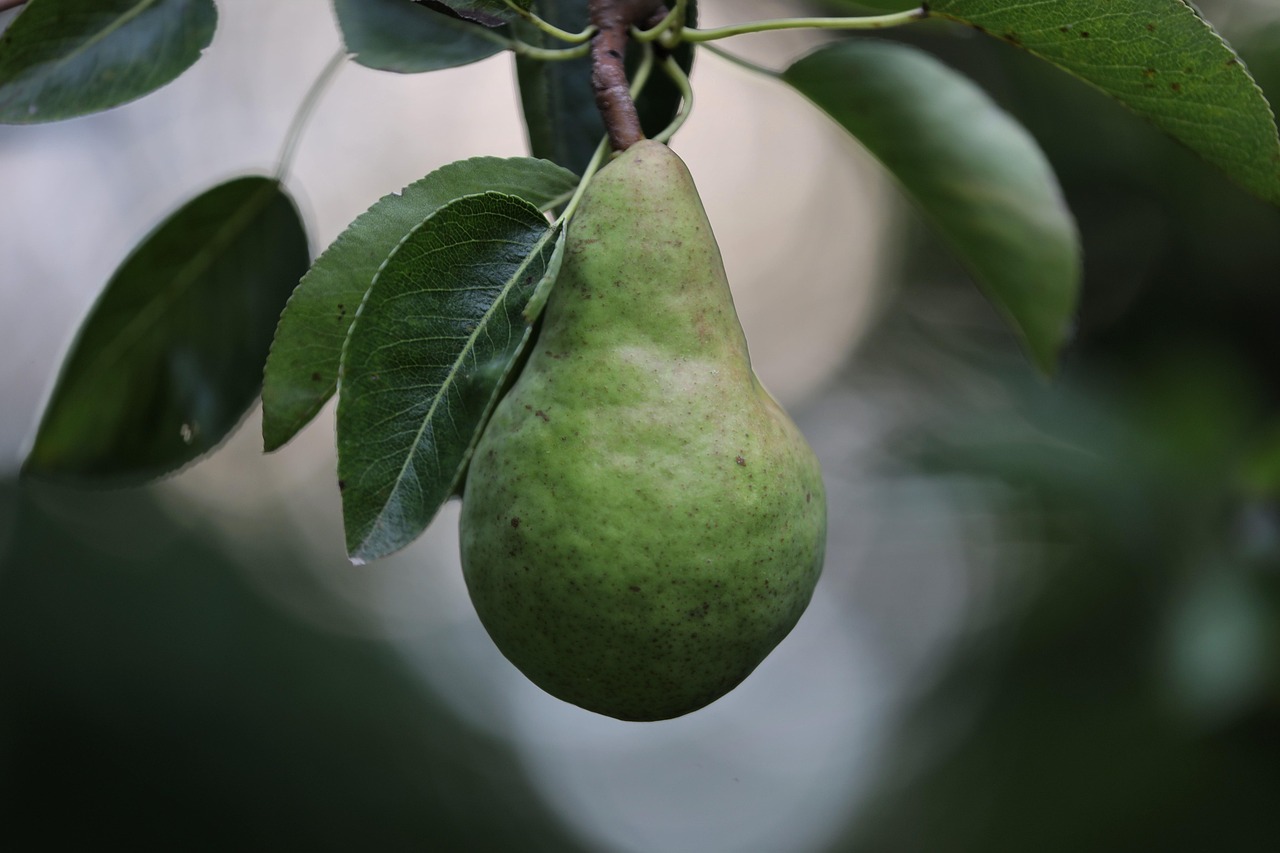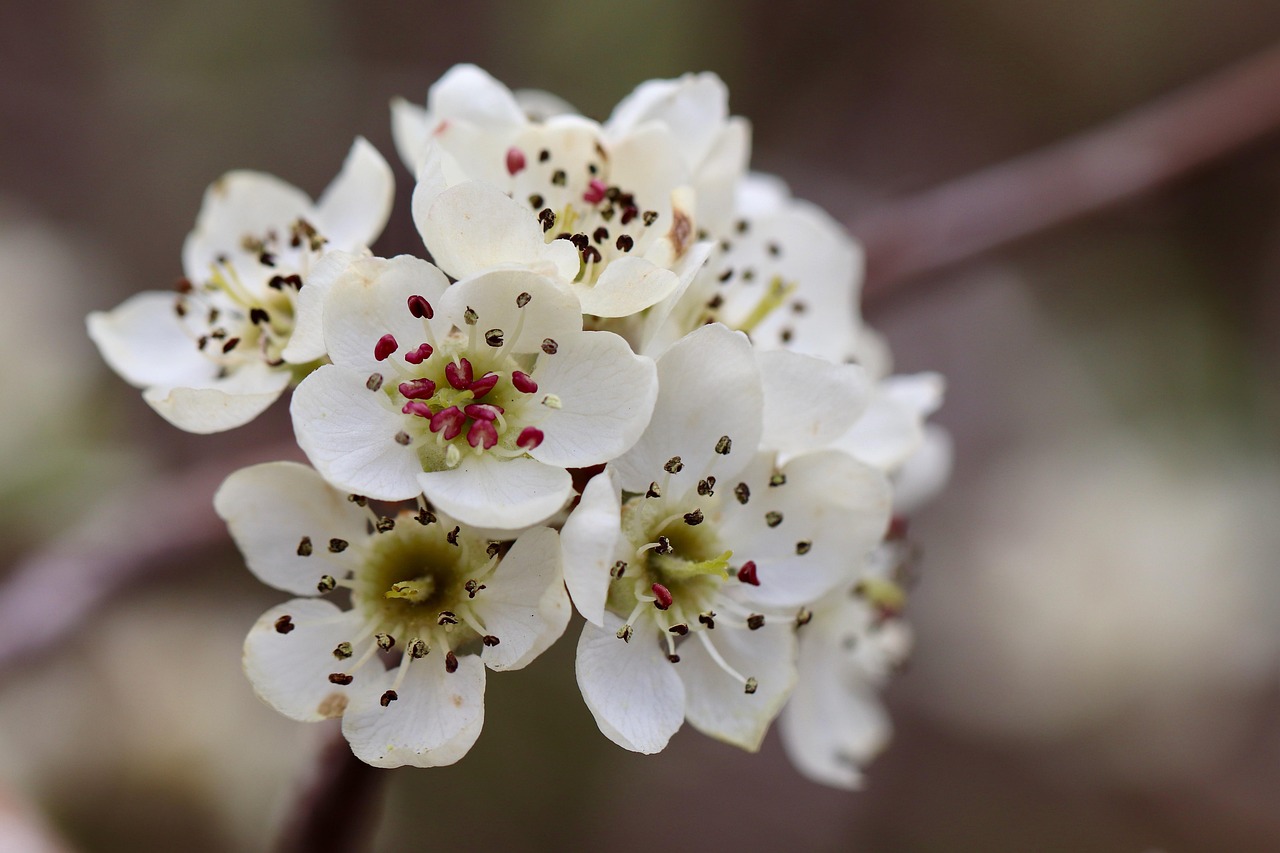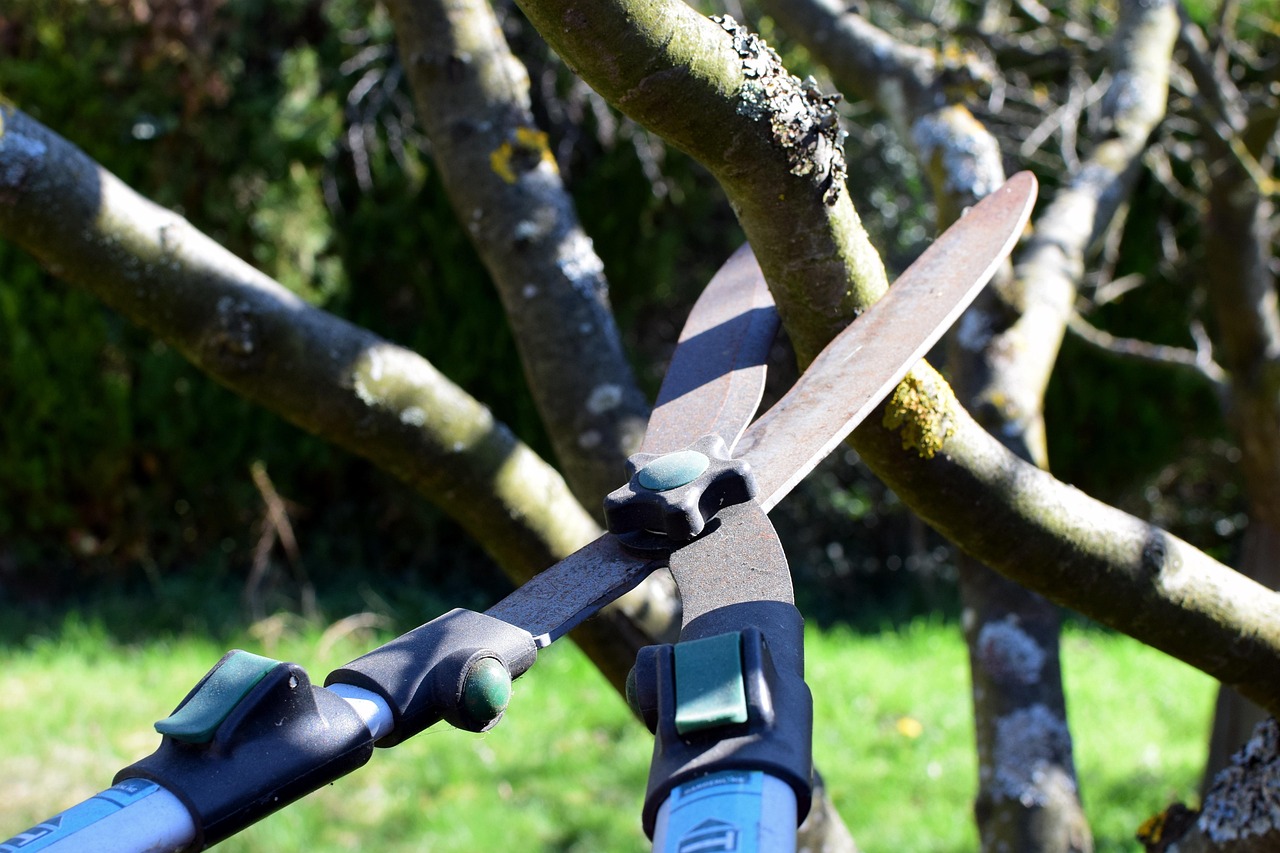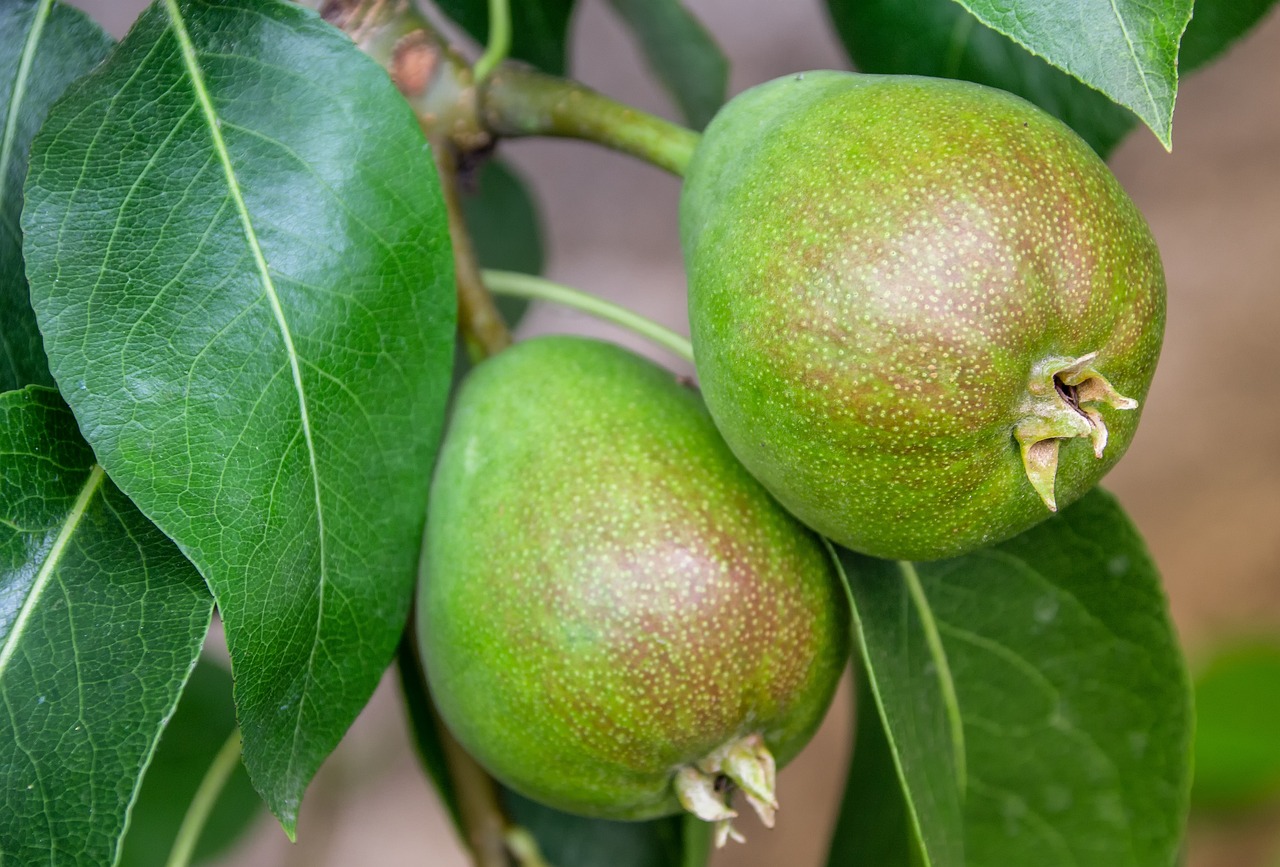Pear tree pruning is essential to enhance resistance against pests. Proper pruning improves air circulation, allows sunlight penetration, and removes diseased or infested branches. This practice helps maintain tree health and reduces pest populations, leading to a more productive harvest.
Pear trees are a popular choice among fruit growers due to their delicious fruit and beautiful blossoms. However, they are susceptible to various pests and diseases that can significantly impact their health and yield. One of the most effective strategies for managing these issues is through proper pruning. Pruning not only shapes the tree but also influences its overall vigor and resilience against pests.

Understanding the relationship between tree health and pest resistance is crucial. When pear trees are pruned correctly, they develop a strong structure that can better withstand pest attacks. Additionally, pruning helps eliminate areas where pests may hide or breed. Regular maintenance can lead to healthier trees that produce plentiful fruit.
Benefits of Pruning Pear Trees
Pruning offers several benefits that contribute to the health and productivity of pear trees. Here are some key advantages:
- Improved Air Circulation: Pruning opens up the canopy, allowing better airflow. This reduces humidity levels, which can deter certain pests and diseases.
- Enhanced Sunlight Penetration: By removing overcrowded branches, sunlight reaches more parts of the tree, promoting healthy growth.
- Increased Fruit Quality: Well-pruned trees often yield higher quality fruit due to improved nutrient distribution.
- Disease Management: Removed dead or diseased branches reduce the risk of disease spread among healthy parts of the tree.
Effective pruning not only enhances the tree’s appearance but also its resistance to pests. It is important to prune at the right times and in the right ways to achieve these benefits.

When to Prune Pear Trees
The timing of pruning is critical for maximizing its benefits. Generally, the best time to prune pear trees is during their dormant season, which typically occurs in late winter to early spring. During this period, the tree is not actively growing, making it easier to see its structure and identify branches that need attention.
Pruning during dormancy can also minimize stress on the tree. Additionally, it helps prevent damage from pests that may be active during the growing season. However, light pruning can be done in the summer months if necessary, especially for removing dead or diseased wood.
Pruning Techniques
There are several techniques to consider when pruning pear trees. Each method serves a specific purpose and contributes to overall tree health:

- Thinning: This technique involves removing entire branches to increase light penetration and airflow. Thinning is particularly useful for overcrowded areas.
- Heading Back: Cutting back a branch to a bud or lateral branch encourages new growth while maintaining the overall shape of the tree.
- Cleaning: This involves removing dead, diseased, or damaged branches. It is essential for preventing pest infestations and diseases.
- Shaping: Regular shaping helps maintain a desirable form for the tree, which can improve both aesthetics and fruit production.
Each of these techniques can be used in combination to promote healthy growth while also addressing pest resistance. It is essential for gardeners and orchardists to familiarize themselves with these methods to ensure effective pruning.
Common Pests Affecting Pear Trees
Pear trees can be affected by various pests that threaten their health. Understanding these pests is crucial for developing effective management strategies. Below is a table listing some common pests that affect pear trees along with their potential impact:
| Pest | Description | Impact on Trees |
|---|---|---|
| Pear Psylla | A small insect that feeds on pear tree sap. | Causes leaf curling and stunted growth. |
| Coddling Moth | A larval stage insect that bores into fruit. | Leads to fruit drop and decay. |
| Scale Insects | Suck sap from branches and leaves. | Weakens trees; can cause dieback. |
| Spider Mites | Tiny pests that create webbing on leaves. | Causes leaf discoloration and drop. |
By understanding these pests and their effects, growers can better implement effective pruning strategies along with other pest management techniques. Regular monitoring of the tree’s health will also help in identifying any potential issues early on.

Essential Pruning Tools and Techniques
To effectively prune pear trees, it is crucial to use the right tools. The appropriate tools not only make the task easier but also ensure cleaner cuts, which promote healing and reduce the risk of disease. Here are some essential tools for pear tree pruning:
- Pruning Shears: These are ideal for cutting small branches and stems. Choose bypass shears for clean cuts that minimize damage.
- Loppers: Useful for cutting thicker branches, loppers provide extra leverage and reach.
- Pruning Saws: When dealing with larger branches, a pruning saw is necessary. It allows for precise cuts without damaging the tree.
- Hand Saw: A hand saw can be used for larger limbs when loppers are insufficient.
- Safety Gear: Always wear gloves and eye protection to ensure safety while pruning.
Using the right tools is just one aspect of effective pruning. Proper techniques are equally important to achieve desired results.
Pruning Techniques Explained
There are various techniques used in pruning to enhance the health of pear trees and resist pests. Understanding these methods allows for better management of the tree’s structure and growth.
Thinning Cuts
Thinning cuts involve removing entire branches at their point of origin. This technique is beneficial for:
- Improving light penetration within the tree canopy.
- Enhancing air circulation, which reduces humidity.
- Encouraging new growth by redirecting energy to healthier areas.
Heading Cuts
Heading cuts shorten a branch by cutting it back to a bud or lateral branch. This technique stimulates growth in the remaining buds. Key benefits include:
- Promoting bushier growth.
- Creating a more compact tree shape.
- Directing growth to specific areas for better fruit production.
Cleaning Cuts
Cleaning cuts focus on removing dead, diseased, or damaged branches. This is crucial for:
- Preventing the spread of diseases that can attract pests.
- Maintaining overall tree health by reducing stress on the remaining structure.
- Improving the appearance of the tree.
Understanding Tree Structure
A knowledge of pear tree structure is essential for effective pruning. Pear trees typically have a central leader system, which means they grow with a main vertical stem supported by lateral branches. Understanding this structure helps in making informed pruning decisions.
Main Leader and Lateral Branches
The main leader is the strongest part of the tree, and it should ideally be preserved during pruning. Lateral branches should be spaced evenly around the leader to ensure balanced growth. Properly spaced branches can help in:
- Reducing competition for light and nutrients.
- Minimizing crowding, which attracts pests.
- Enhancing overall fruit quality and yield.
The Role of Timing in Pruning
The timing of pruning activities can significantly impact the effectiveness of pest resistance strategies. Different stages of growth require different approaches:
- Dormant Season (Late Winter to Early Spring): Ideal for major pruning tasks, as trees are not actively growing. This minimizes stress and allows for better healing.
- Early Spring: Minor tweaks can be made as buds swell, allowing growers to adjust for any visible issues.
- Summer Pruning: Light summer pruning helps manage excessive growth and can be beneficial in reducing pest habitat during the growing season.
Pest Management Through Pruning Practices
In addition to enhancing tree health, pruning directly contributes to effective pest management strategies. Here are ways in which pruning supports pest resistance:
- Reducing Hiding Places: By removing dense or overgrown areas, pruning decreases habitats where pests can hide and thrive.
- Improving Visibility: With a well-pruned tree, it becomes easier to spot signs of pest infestations early on.
- Encouraging Beneficial Insects: A healthy tree attracts beneficial insects that prey on pests, naturally reducing pest populations.
In conclusion, integrating proper pruning techniques with an understanding of tree structure and timing is essential for enhancing the resistance of pear trees against pests. This proactive approach will lead to healthier trees and more fruitful harvests.
Signs of Pest Infestation
Recognizing the signs of pest infestation early is crucial for effective management. Pear trees can exhibit a variety of symptoms that indicate the presence of pests. Knowing what to look for can help in taking timely action to protect the tree’s health.
Common Symptoms of Infestation
Here are some common symptoms to watch for when monitoring pear trees:
- Leaf Discoloration: Yellowing or browning of leaves may indicate stress from pest activity.
- Leaf Curling: Curling leaves are often a sign of pests like pear psylla feeding on sap.
- Webbing: The presence of tiny webs, often created by spider mites, can indicate an infestation.
- Fruit Damage: Holes or bore marks on fruit are signs of pests such as the coddling moth.
- Sticky Residue: A sticky substance on leaves or fruit may suggest the presence of aphids or scale insects.
Regularly inspecting pear trees for these symptoms can help in early detection, allowing for prompt intervention to prevent further damage.
Integrated Pest Management (IPM) Strategies
Implementing an Integrated Pest Management (IPM) approach can enhance the effectiveness of pruning while managing pests. IPM combines multiple strategies to minimize pest damage while reducing reliance on chemical treatments. Here are some key components of IPM for pear trees:
1. Cultural Practices
Cultural practices involve changes in the growing environment to make it less conducive to pest problems. Some effective cultural practices include:
- Proper Spacing: Ensure adequate spacing between trees to improve air circulation and reduce humidity.
- Soil Health: Maintain healthy soil through composting and organic amendments, promoting vigorous tree growth.
- Water Management: Water trees appropriately to avoid stress, which can make them more susceptible to pests.
2. Monitoring and Observation
Regular monitoring is essential for effective pest management. Observing the tree and its environment helps in identifying potential problems. This can include:
- Pest Traps: Use sticky traps to monitor insect populations and determine the timing of infestations.
- Scouting: Regularly scout the tree for signs of pests, especially during the growing season.
- Weather Conditions: Keep track of weather patterns as certain conditions can foster pest outbreaks.
3. Biological Control
Encouraging natural predators can help manage pest populations without chemicals. Some methods include:
- Beneficial Insects: Introducing ladybugs and lacewings can help control aphid populations.
- Nest Boxes: Providing nesting sites for birds can help keep pest numbers in check.
- Crop Rotation: Rotating crops every few years can disrupt pest life cycles and reduce infestations.
Seasonal Pest Management Tips
Differentiating pest management strategies by season can be highly beneficial. Each season presents unique challenges and opportunities for managing pests effectively.
Spring Strategies
As buds begin to swell in spring, it is important to take preventive measures:
- Apply Dormant Oil: A dormant oil spray can suffocate overwintering pests and prevent early infestations.
- Inspect New Growth: Regularly check new growth for signs of pests or diseases.
- Thin Fruits Early: If necessary, thin immature fruits to reduce the risk of overcrowding which attracts pests.
Summer Strategies
During summer, active monitoring is essential as pests become more prevalent:
- Avoid Excessive Nitrogen: Limiting nitrogen fertilization can help reduce lush growth that attracts pests.
- Implement Traps: Use traps for specific pests like coddling moths to monitor and manage their populations.
- Mite Control: Keep an eye out for spider mites; if found, consider introducing predatory mites as a control measure.
Fall Strategies
The fall season signals preparation for winter, which also includes pest management:
- Cleansing Debris: Remove fallen leaves and fruit from the ground to reduce overwintering sites for pests.
- Dormant Sprays: Consider applying a dormant spray before winter to control overwintering pests.
- Pruning for Winter: Conduct final pruning to shape trees and remove any dead or diseased wood before winter dormancy.
This proactive approach throughout the seasons will help keep pear trees healthy and resilient against pest threats, enhancing both their longevity and productivity.
Advanced Pruning Techniques for Pear Trees
In addition to the basic pruning techniques discussed earlier, there are advanced methods that can further enhance the health and productivity of pear trees. These techniques may require more skill and knowledge but can yield significant benefits.
Espalier Pruning
Espalier pruning involves training the tree to grow flat against a wall or trellis. This method is particularly useful for limited spaces and can create a stunning visual effect. Benefits of espalier pruning include:
- Maximized Space: Ideal for small gardens, allowing for efficient use of vertical space.
- Improved Sun Exposure: Leaves receive more sunlight, enhancing photosynthesis and fruit production.
- Aesthetically Pleasing: Creates a unique and attractive landscape feature.
Crown Reduction
Crown reduction is a technique used to reduce the height of a tree while maintaining its overall shape. This method is beneficial for management in urban environments where tree height may pose a risk. Key points to consider include:
- Safety: Reducing height can minimize the risk of branches breaking and falling in storms.
- Accessibility: Easier to reach fruit and branches, making maintenance simpler.
- Health Benefits: Promotes new growth in lower branches, improving overall tree health.
Seasonal Fertilization and Soil Health
In addition to pruning, maintaining soil health and providing proper fertilization are critical for supporting pear tree vitality. Here’s how these practices contribute to pest resistance:
Soil Testing
Conducting soil tests helps identify nutrient deficiencies that can weaken trees, making them more susceptible to pests. Regular testing allows for:
- Nutrient Management: Tailoring fertilization based on specific needs can strengthen tree immunity.
- pH Adjustment: Balancing soil pH ensures optimal nutrient availability for the tree.
- Disease Prevention: Healthy soil fosters strong root systems, reducing stress on the tree which can attract pests.
Organic Fertilizers
Using organic fertilizers enhances soil health over time. Some benefits include:
- Microbial Activity: Organic matter boosts beneficial microbes in the soil, promoting nutrient uptake.
- Sustained Nutrients: Organic fertilizers release nutrients slowly, ensuring that trees receive consistent nourishment.
- Environmental Benefits: Reduces chemical runoff, promoting a healthier ecosystem.
Pest Resistance Varieties
Selecting pest-resistant pear tree varieties can also play a significant role in managing pest populations. Some cultivars are bred specifically for their resistance to common pests and diseases. When choosing varieties, consider:
- Local Adaptation: Select varieties that are well-suited to your local climate and soil conditions.
- Disease Resistance: Look for varieties that have been shown to resist specific pests like pear scab or fire blight.
- Yield Potential: Choose varieties known for high productivity, ensuring a fruitful harvest even in the face of pest pressures.
Final Thoughts
Pear tree pruning is an essential practice that significantly impacts the health and productivity of trees while enhancing their resistance against pests. By implementing proper pruning techniques, understanding the seasonal needs of the tree, and integrating pest management strategies, growers can cultivate robust pear trees that thrive in any environment.
The combination of well-timed pruning, effective monitoring of pests, and supporting soil health creates a holistic approach to pear tree care. Additionally, exploring advanced pruning techniques and selecting resistant varieties further strengthens this approach. Ultimately, with dedication and knowledge, gardeners can enjoy abundant harvests while minimizing the impact of pests on their pear trees.
By applying the insights shared throughout this article, you can foster healthier pear trees that not only resist pests but also yield delicious fruit for years to come.
